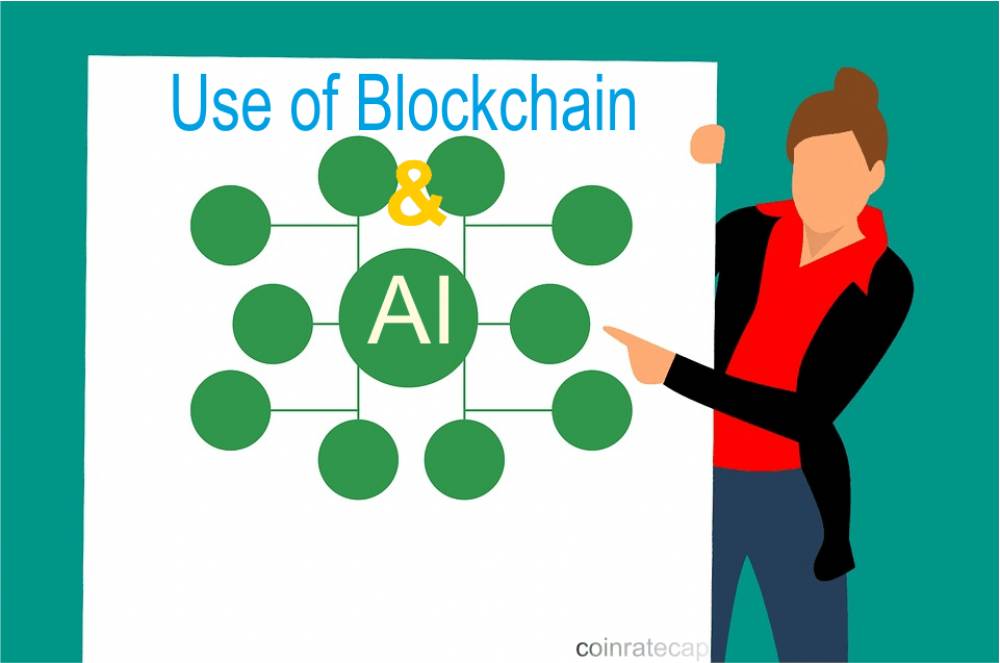
Basically, Blockchain is a transparent, distributed ledger that stores data in an encrypted immutable format called cryptography. Whereas A.I. is a machine capable of performing tasks that seemingly require intelligence.
Blockchain provides many solutions to businesses and techs. Therefore, it also has the capability of being the underlying technology of Artificial intelligence (AI). There are cases where blockchain and AI have been used - the case of SOVA, which merges artificial intelligence and blockchain technologies.
Both blockchain and artificial intelligence radically change the usual course of modern business and breathe new life into it, offering a completely different approach for generating value.
Artificial intelligence works on the following principle: on the basis of an array of data, it builds a model that can predict a particular result on the given parameters. It is found that the more data is available to the AI, the more accurate the final model is obtained.
That is why the availability of large amounts of data, which appeared in a particular time due to the development of the Internet, allowed to make a significant breakthrough in the field of artificial intelligence technologies. Probably, the blockchain will provide an opportunity to receive even more data, which will have a positive impact on the development of AI.
Decentralized data management provides greater data security. Users will know that the information they share is completely secure and cannot be stolen easily as it happens now. In addition, the data will be managed in a decentralized manner, not by some monopoly company, as in the case of, say, Facebook or Google, which can use your data at its discretion.
All this, in turn, will encourage users and companies to share data more actively. And thanks to the large volume and variety of data available, artificial intelligence will be able to build more accurate and comprehensive models. For example, on the basis of data received from all banks at once, rather than from one, it will be possible to build a more accurate model that predicts which of the potential borrowers will return the loan and who will not.
The blockchain is empowering the Artificial Intelligence by creating a block of AI information that interacts with another block of AI. Let's say some AI driven model is checking out the possibility of whether Judge Kavanaugh will be successfully nominated next week. After the judiciary committee vote but before Senator Flake's committee vote became public, the likelihood was very high. It went down when the conditionality was revealed; kept going down as more and more senators gave statements; and went to zero when President Trump announced an FBI investigation and vote was postponed.
This is a top of mind example but think of the various things that can be done within enterprises. For instance, consider an AI planning system that controls a shop floor based on inputs from various machine-specific models, which, in turn, depend on IOT Sensors. Or think of an investment bank with so many disparate teams that a simple question like What is GDP Forcast for 2019, confuses the user.
We use these asynchronous learners all the time for our cognitive computing applications in knowledge management. Someday, we have the ambition to ingest the whole internet. While alternatives are theoretically possible, it is very difficult to do such a thing without blockchain being embedded in the continuous flow of training set.
AI is primarily about data and how to gain value from it. A core component of this is dealing with the veracity and, in extension value, of the data and its application (the 5 Vs of Big Data: volume, velocity, variety, veracity and value). I will focus on the veracity and value here.
A central issue in machine learning and neural networks is gaining access to data sets to train the machines/applications. Important from this perspective is knowing where the data comes from, who has touched it, etc, in order to understand the biases of the underlying data. This will affect the ultimate value that can be gained from AI applications and how it affects business and society. For example, if the data is skewed it will be difficult to optimize along the correct vectors to maximize profit for a particular activity or to gain the expected efficiencies in terms of productivity.
In extension, with the increasing proliferation of AI applications, there are a rising number of instances where these have deleterious consequences for society, including unintentional discrimination against women and minorities in job searches or loan applications, sending people to prison, and selecting for risk and other factors.
Blockchain, as a technology, can mitigate some of these factors. The distributed nature of blockchain, the transparency and immutability that it provides, and the intrinsic value in creating an enhanced layer of security, are all central to moving the AI industry to a process and state where the underlying data for decisions are auditable and open. Since so many practical applications (e.g. image recognition and organizational decisions) are based on data, it is important to understand and be able to amend the processes and results from both an organizational and societal perspective.
Cases, where this combination of blockchain and AI has been used is Quarrio, which is creating a global ecosystem for decentralized information analysis and have created a natural language interface to data sources using artificial intelligence. This means that anyone can quickly and easily retrieve information by having simple conversations with data.
The blockchain is very smartly integrated with the Artificial Intelligence. Immutability is one of the capabilities of the AI that analyses massive data and structures and with decentralized units, a higher amount of data can be processed resulting in more strong AI networks.
The most attention-grabbing half is we are able to have factual information that can’t be altered. Think about AI technology gets into blockchain to induce information, to get patterns, and develop insights in keeping with patterns.
What other solutions does the use of blockchain and AI bring to humanity?
According to Dr Abdalla Kablan, a Fintech award winner stated that " I believe that blockchain technology can be considered an enabler of better forms of Artificial Intelligence. For example, if we consider smart contracts as decentralised applications that can be autonomous and pseudonymously running on the blockchain, then we are technically taking a step towards creating a new form of autonomous
intelligence, since the platforms on which these smart contracts are running are being designed in such a way that increases automation, autonomy, and complexity".
There is the notion of a technological singularity which is a moment in history when machine intelligence will supersede human intelligence, and we believe that a blockchain based consensus mechanism may be able to foster a “Friendly” form of AI. It is possible that blockchain technology could be a useful safeguard and connector between humans and machines in a world of increasingly autonomous machine activity through DAPPS and DAOs. Consensus as a mechanism could be instrumental in bringing about and enforcing friendly AI, because a rogue AI may not be able to achieve consensus hence it’d be outcast by the network.
A real-life example of this would be a psychopath, who may exist around us but is forced into good player behaviour through the pressure, structure, and regulations of society. In the same manner, in using blockchain to control the interaction between AI systems, any network transaction that any AI agent needs to conduct will require some form of authentication that is consensus-signed (through the blockchain), which cannot be obtained unless the agent has a good reputational ranking on the network we believe that this is how friendly AI might be effectuated in a blockchain consensus-based model, thus safeguarding us from potential future threat of AI.
READ MORE
The blockchain is empowering the Artificial Intelligence by creating a block of AI information that interacts with another block of AI.

Written by Saira wo